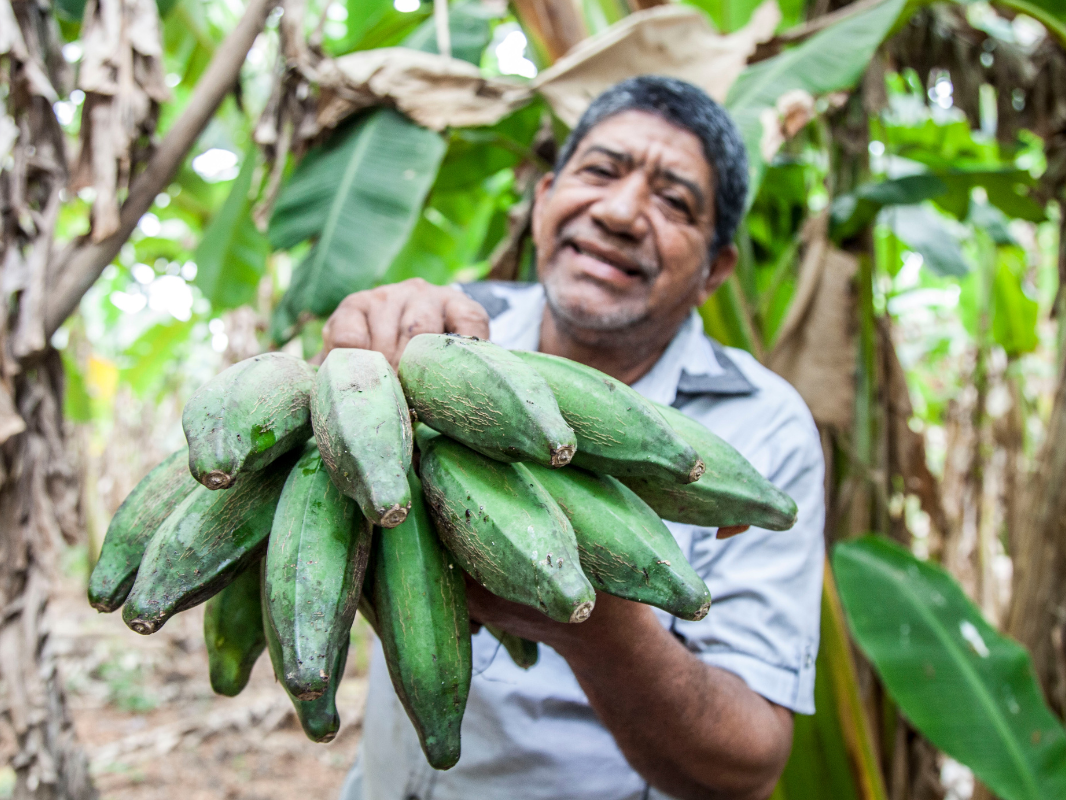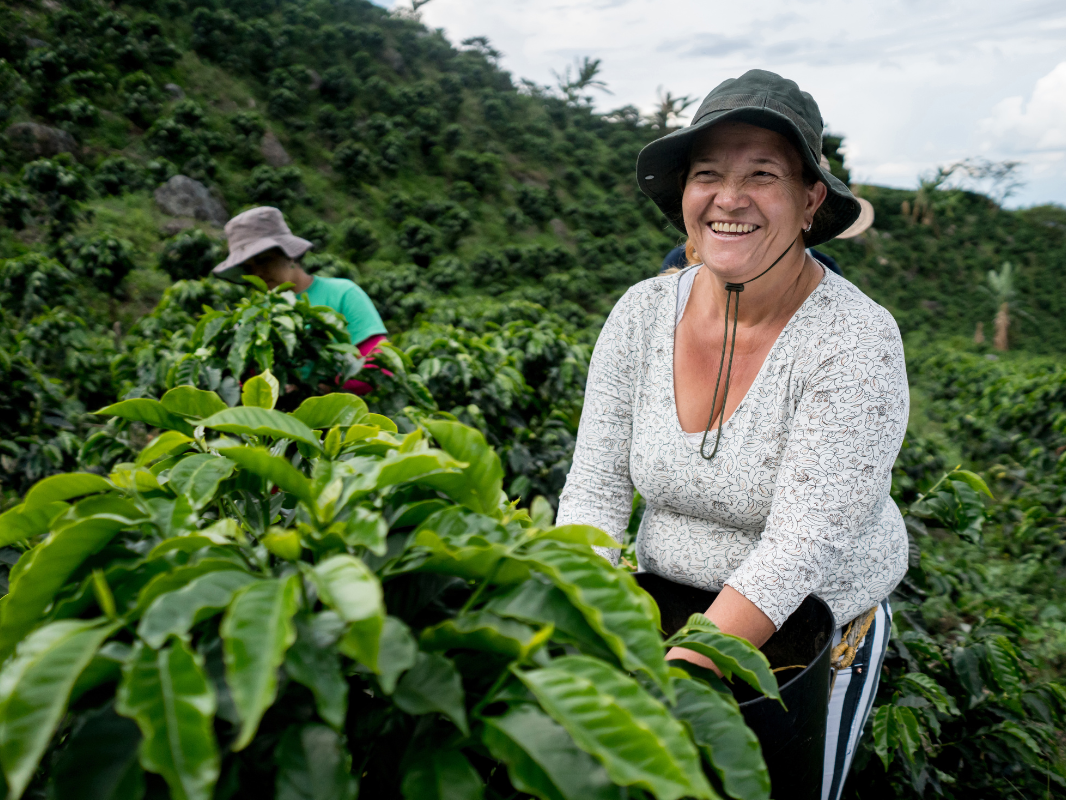Colombia’s agricultural wealth extends beyond its world-famous coffee, providing fertile ground for investors and expats looking to enter a diverse and thriving agrarian sector to invest in a product.
From the lush valleys that produce avocados and bananas to the vibrant flower fields that captivate global markets, Colombia offers a range of opportunities to invest in a product with high growth potential. This blog explores Colombia’s vast agricultural landscape and why it’s an attractive destination for those looking to make a wise, sustainable investment. Join us as we discover the benefits and opportunities that Colombia’s agricultural wealth has to offer.
Colombia’s agricultural diversity
Beyond coffee – a look at Colombia’s rich crops
Colombia, renowned for its aromatic coffee, has much more to offer in its agricultural bounty. Beyond the comforting aroma of coffee beans, the country boasts a diverse range of crops that present promising investment opportunities. We’ll look closer at three high-potential products: avocados, bananas, and flowers, shedding light on why they make compelling investments in Colombia.
Avocados:
Let’s begin with the humble avocado, a fruit that has skyrocketed in popularity worldwide. Avocados have seen a surge in demand globally due to their nutritional value and versatility in various cuisines. This increasing demand creates a lucrative opportunity for investors looking to capitalize on the avocado market.
In addition, Colombia’s geographical advantage, with its conducive climate and diverse landscapes, makes it an ideal location for avocado cultivation. The country’s ability to produce avocados year-round further enhances its appeal as an investment destination in this crop.
Bananas:
Bananas may seem commonplace, but their economic significance cannot be understated.
Colombia ranks among the top banana-exporting countries globally, owing to its favorable climate and fertile soil for banana cultivation. Investing in banana plantations in Colombia promises stable returns due to the consistent demand for this beloved fruit.
Moreover, bananas are a resilient investment option, as they are less susceptible to price fluctuations than other commodities. This stability makes them attractive for investors seeking long-term growth and sustainability.
Flowers:
Colombia’s flower industry blooms with color, fragrance, and economic opportunity. The country’s equatorial climate provides an ideal environment for year-round flower cultivation, earning it the title of the world’s second-largest flower exporter. Roses, carnations, and orchids are among the varieties cultivated in Colombia, prized for their quality and beauty.
Investing in Colombia’s flower industry allows investors to diversify their portfolios while tapping into a market driven by domestic and international demand. With increasing globalization, Colombian flowers have found their way into markets worldwide, ensuring a steady revenue stream for investors.
In conclusion, avocados, bananas, and flowers represent just a glimpse into the country’s diverse crop portfolio, offering promising investment opportunities. Whether you’re drawn to the nutritional appeal of avocados, the stability of bananas, or the beauty of flowers, investing in Colombian crops presents a fruitful endeavor worth exploring.
The climate advantage
In this segment, we’ll delve into how Colombia’s climate offers a strategic advantage for year-round agriculture, highlighting the significance of its different thermal floors.
Unlike many other countries, Colombia boasts diverse climates within its borders, thanks to its location near the equator. This diversity is attributed to Colombia’s unique topography, which features three distinct thermal floors: the Tierra Caliente (hot land), Tierra Templada (temperate land), and Tierra Fría (cold ground).
Tierra caliente (hot land):
Low altitudes and warm temperatures characterize it and offer ideal conditions for cultivating tropical fruits and crops. Regions within the Tierra Caliente, such as Colombia’s coastal areas and low-lying plains, benefit from abundant sunlight and consistent warmth throughout the year.
Investors looking to capitalize on the tierra caliente can explore opportunities in tropical fruits like mangoes, pineapples, and passion fruit, which thrive in this climate.
Tierra templada (temperate land):
The Tierra Templada encompasses mid-altitude regions, including Colombia’s renowned coffee-growing areas and fertile valleys and plateaus. With milder temperatures and ample rainfall, the Tierra Templada supports cultivating various crops, including coffee, avocados, and vegetables.
Investors interested in this thermal floor can explore opportunities in coffee plantations with a long-standing reputation for quality and profitability in Colombia’s temperate regions.
Tierra fría (cold land):
These areas comprise high-altitude regions, such as the Andean mountain ranges, where temperatures are more relaxed and frost may occur. Despite the colder climate, the Tierra Fría is suitable for crops like potatoes, quinoa, and flowers, which thrive in these conditions.
Indeed, investors keen on diversifying their portfolios can consider investments in flower farms nestled in Colombia’s highlands, where the cool temperatures contribute to producing vibrant blooms prized in international markets.
Whether it’s tropical fruits, coffee, or high-altitude flowers, investing in Colombia’s agricultural sector presents a compelling opportunity to leverage its unique climate for sustainable growth. So, consider tapping into Colombia’s farm potential and invest in a product that thrives amidst the country’s diverse thermal landscapes.
The path to agricultural investment success
Navigating Colombian agricultural investment

The agricultural investment journey in Colombia can be both exciting and rewarding. However, navigating the landscape requires careful planning and consideration. In this guide, we’ll outline the essential steps and considerations for investing in Colombia’s vibrant agricultural sector, helping you chart a path to success.
Understanding the market landscape:
Before diving into agricultural investment in Colombia, a comprehensive understanding of the market landscape is necessary. Research the various agricultural sectors in Colombia, including crops like coffee, avocados, bananas, and flowers, to identify opportunities aligning with your investment goals.
Therefore, evaluate market trends, demand-supply dynamics, and export potential to assess the viability of different agricultural ventures in Colombia. With a clear understanding of the market, let’s delve into the steps involved in agricultural investment in Colombia.
Steps for agricultural investment:
Step 1: Define your investment objectives and risk tolerance
Clearly outline your investment goals, whether seeking steady returns, long-term growth, or portfolio diversification. Assess your risk tolerance level to determine your agricultural venture’s appropriate investment strategy and asset allocation.
Step 2: Conduct thorough due diligence
Research potential investment opportunities meticulously, examining land quality, climate suitability, and regulatory requirements. Consider partnering with local experts or agricultural consultants to gain insights into specific regions and crops, ensuring you are informed before you invest in a product.
Step 3: Secure financing and legal considerations
Explore financing options available for agricultural investment in Colombia, including bank loans, government subsidies, and private investors. Consult legal professionals to navigate regulatory frameworks, land acquisition procedures, and tax implications associated with agricultural investment in Colombia. Learn more about how The Gutierrez Group can help you.
Step 4: Establish strategic partnerships and operational planning
Forge alliances with local farmers, cooperatives, or agricultural companies to leverage their expertise, resources, and networks in Colombia’s agricultural sector. Develop a comprehensive operational plan encompassing land preparation, crop cultivation, harvesting, and marketing strategies to optimize agricultural investment returns.
Step 5: Monitor performance and adapt to market dynamics
Regularly monitor the performance of your agricultural investment, tracking key metrics such as crop yields, market prices, and financial returns. Stay agile and responsive to market fluctuations, adjusting your investment strategy and operational tactics to capitalize on emerging opportunities and mitigate risks.
In conclusion, investing in Colombia’s agricultural sector offers immense potential for growth and prosperity. By following these steps and considerations, you can confidently navigate the complexities of agricultural investment in Colombia and chart a path to success. So, seize the opportunity to invest in a product that yields financial returns and contributes to the sustainable development of Colombia’s agricultural landscape.

Why invest in Colombia’s agriculture?
The economic and social impact
Investing in Colombia’s agriculture goes beyond mere financial gain; it promises to foster economic growth and community development.
Agriculture is a cornerstone of Colombia’s economy, contributing substantially to its GDP and employment opportunities—; the agricultural sector accounts for a significant portion of Colombia’s GDP, providing livelihoods for millions nationwide. Furthermore, Colombia’s agriculture is a crucial driver of export revenue, bolstering the nation’s foreign exchange reserves.
Critical agricultural products such as coffee, flowers, and bananas are among Colombia’s top exports, generating substantial income and enhancing the country’s trade balance. Beyond its economic significance, agriculture is vital in fostering community development and improving livelihoods.
Investments in agricultural infrastructure, such as irrigation systems and farm equipment, create employment opportunities and improve productivity in rural areas. Moreover, agriculture catalyzes poverty reduction and food security, particularly in remote and marginalized communities. By investing in agricultural education and training programs, Colombia can empower farmers with the knowledge and skills to enhance crop yields and sustainable farming practices.
Additionally, the agricultural sector in Colombia contributes to environmental conservation efforts and promotes sustainable land management practices. Investments in agroforestry, organic farming, and biodiversity conservation preserve Colombia’s rich natural resources and mitigate the impact of climate change on agricultural productivity.
Prospects for agricultural investors
As the agricultural landscape continues to evolve, investors keen on tapping into Colombia’s agricultural potential are presented with promising prospects. In this segment, we’ll explore emerging trends and opportunities, including the burgeoning field of agroforestry, that await agricultural investors in Colombia.
Keeping an eye on emerging trends is crucial for staying ahead in the dynamic agricultural sector. One such trend gaining momentum in Colombia is adopting sustainable farming practices, driven by increasing environmental awareness and consumer demand for ethically sourced products. Furthermore, technological advancements are reshaping agricultural production and management practices in Colombia.
Technology enhances efficiency, productivity, and sustainability across the agricultural value chain, from precision farming techniques to data-driven decision-making tools. Amidst these trends, agroforestry emerges as a promising avenue for agricultural investment in Colombia.
Opportunities in agroforestry:
Agroforestry, the practice of integrating trees and shrubs into agricultural landscapes, offers a host of benefits for both investors and the environment. In Colombia, agroforestry presents opportunities to diversify income streams, improve soil health, and mitigate climate change impacts.
Strategically planting trees alongside cash crops or livestock, agroforestry systems increase ecosystem resilience and promote biodiversity conservation. Investors can explore agroforestry projects that utilize native tree species, such as cacao, timber, or fruit trees, to create sustainable agroecosystems with long-term economic and environmental benefits.
Learn more about the Colombia Timber project.
Additionally, agroforestry aligns with Colombia’s commitments to sustainable development and climate action, making it an attractive investment option for socially responsible investors.
Conclusion
Invest in a product in Colombia thanks to its agricultural abundance. Colombia’s agricultural wealth extends beyond its world-famous coffee, providing fertile ground for investors and expats looking to enter a diverse and thriving agricultural sector.
Investing in Colombia’s agricultural sector offers immense potential for growth and prosperity. By recognizing the intrinsic value of agriculture beyond financial returns, investors can make a meaningful impact on the lives of Colombians while securing long-term prosperity. So, consider investing in a product that yields financial gains and contributes to the sustainable development of Colombia’s agricultural landscape.



Несомненно важные новинки подиума.
Важные мероприятия известнейших подуимов.
Модные дома, бренды, гедонизм.
Самое приятное место для модных людей.
https://breakmoda.ru/
Модные заметки по созданию отличных образов на каждый день.
Мнения стилистов, события, все новые коллекции и шоу.
https://emurmansk.ru/pub/2024-09-10-demna-gvasaliya-revolyutsioner-mody-i-kreativnyy-provokator/